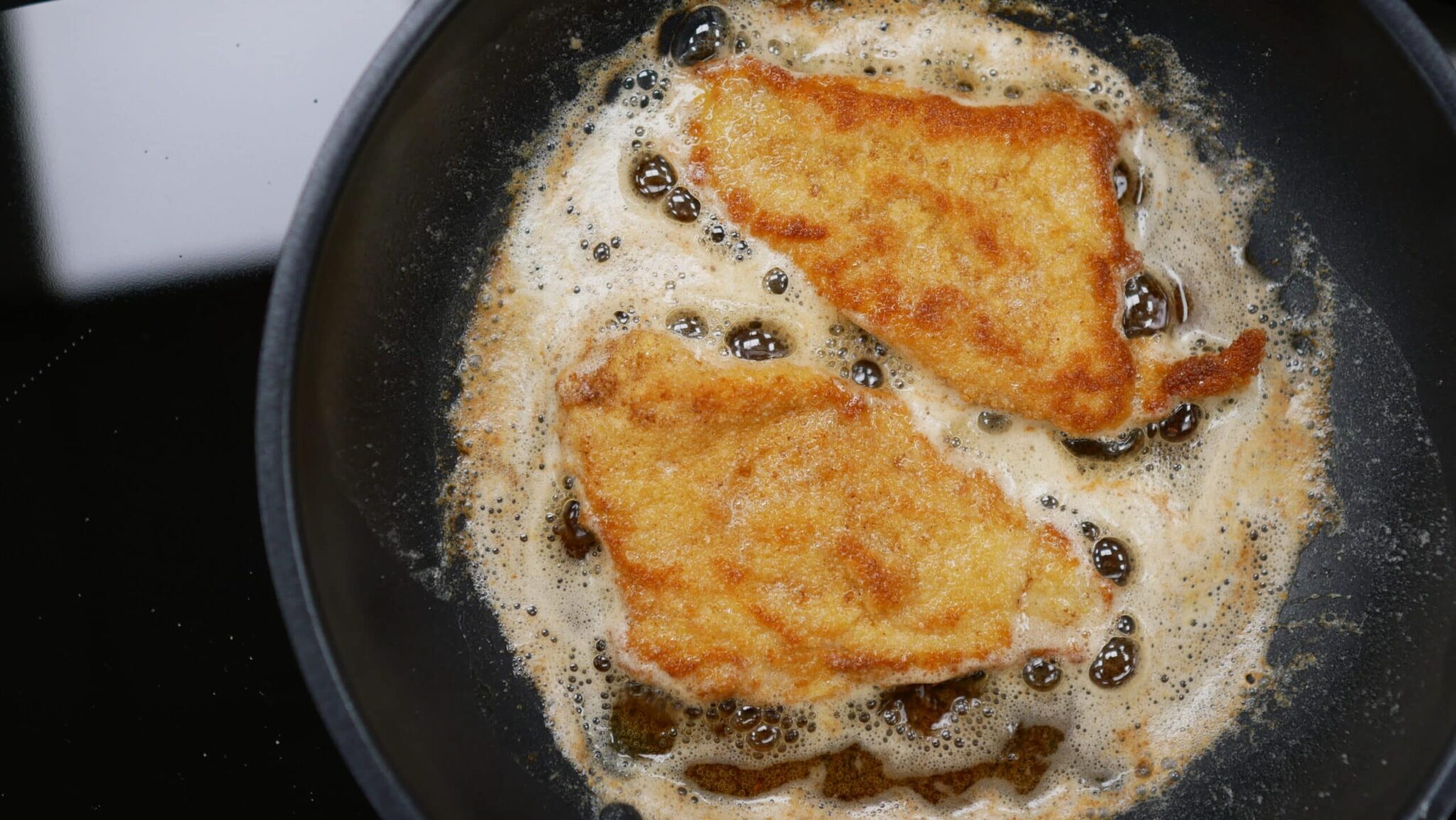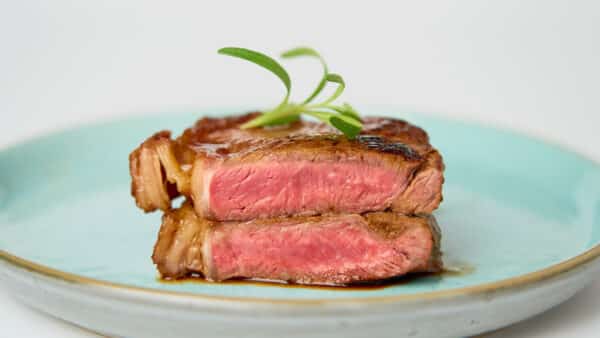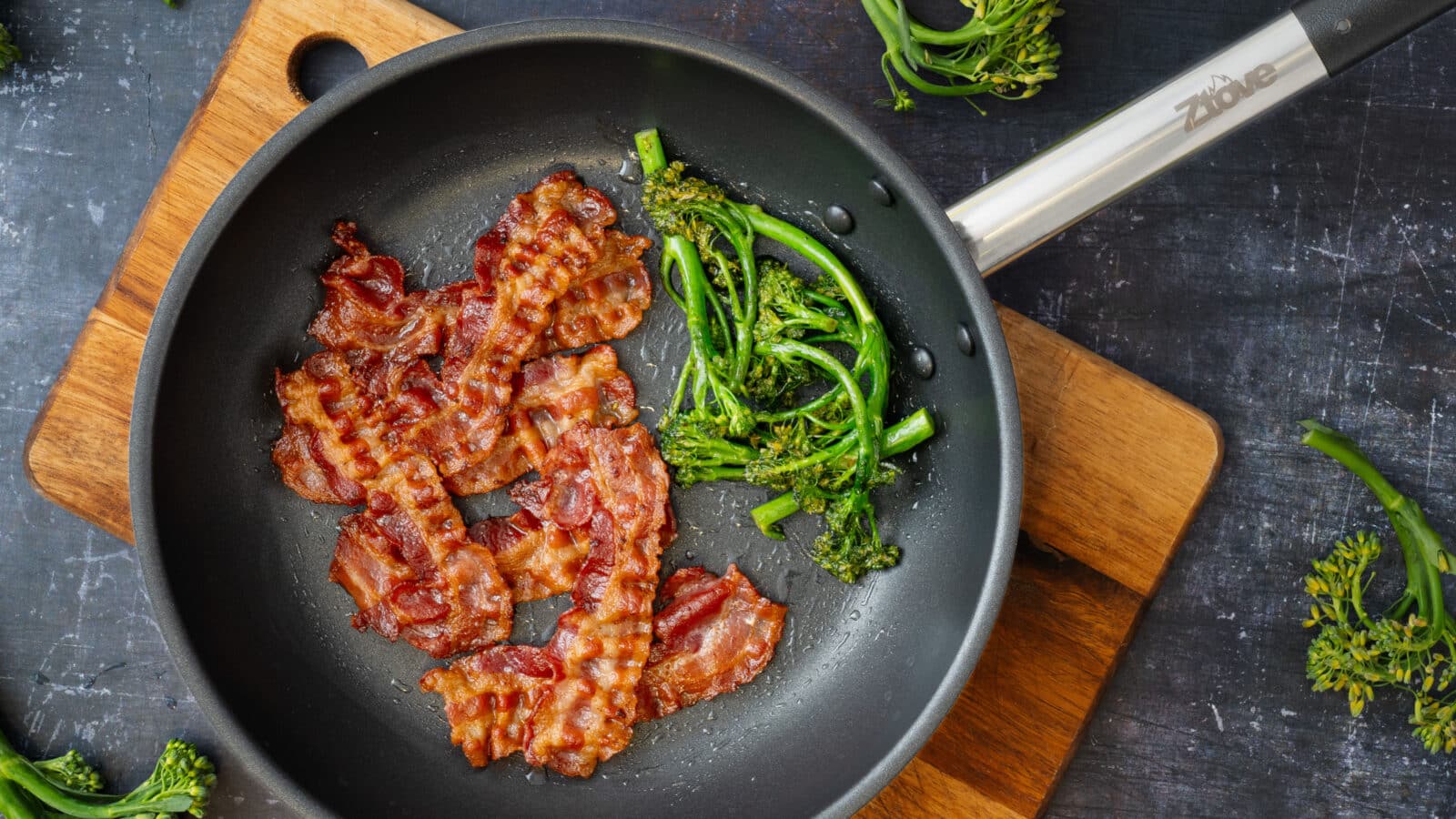What is a crust?
In this blog post, we take an in-depth look at the science behind the frying, the relationship between the crust and temperature, and we share how you can easily achieve a good crust with Ztove and temperature control.
A crust is the outer layer of your fried steak, toasted bread, fried potatoes, meatballs and many other delicious dishes. The crust is primarily defined by two things.
The thickness of the crust
A crust is fundamentally food that is cooked so that the surface dries out and browns. As long as water is present, the outside cannot brown because the temperature is suppressed by the water. Once the water has evaporated, the temperature increases and the food will start to brown. The thickness of the crust is therefore dependent on time – that is, how long you cook the food.
Longer cooking times will result in a thicker crust, as the area without moisture will increase in thickness.
The colour of the crust
The colour of the crust depends on both time and temperature. Like the thickness of the crust, the colour is also dependent on the cooking time, but it is also largely determined by the cooking temperature. The higher the temperature, the darker the colour of the crust.
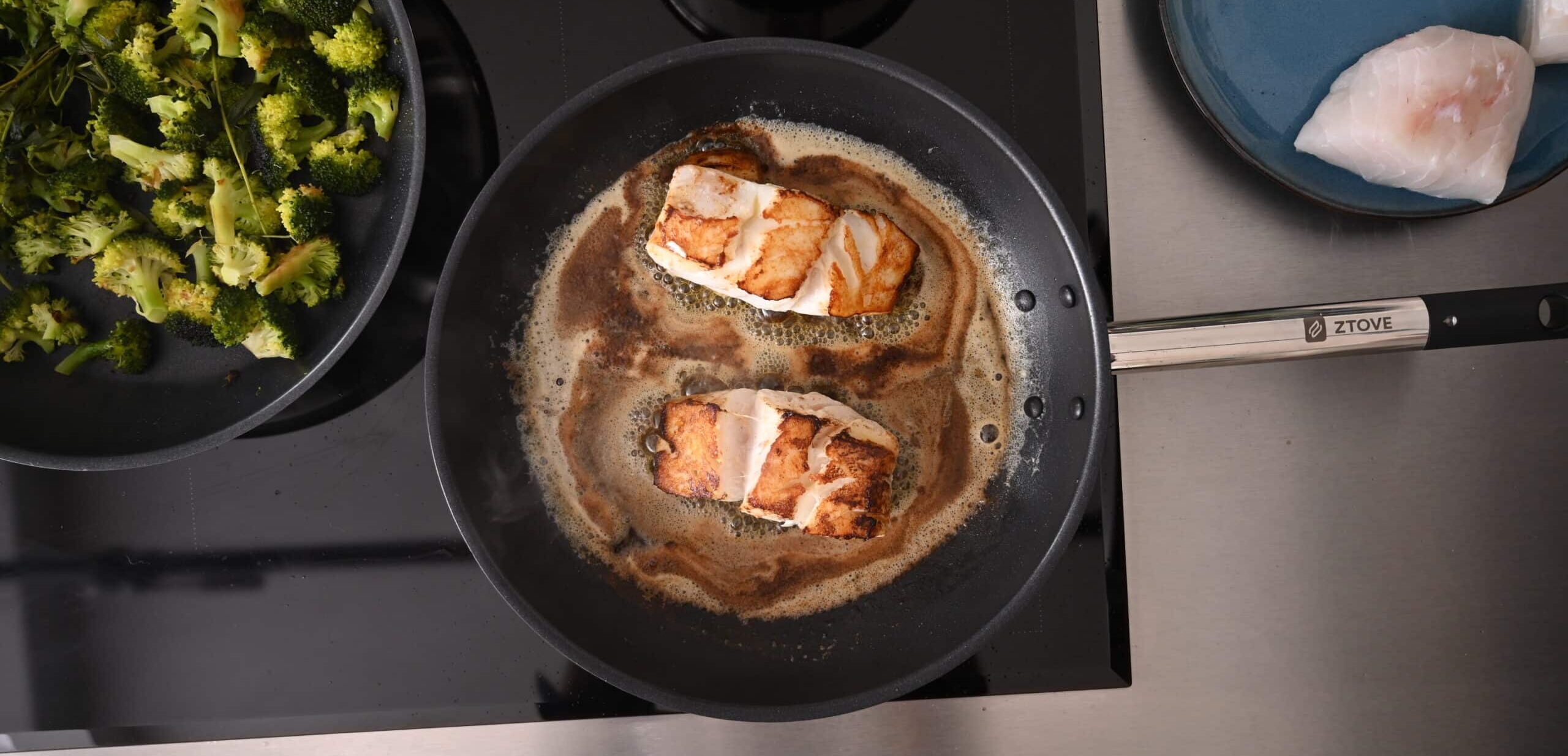
Maillard reactions and caramelisation
There is a lot of flavour in a crust, which is why we like our food to have a perfectly brown crust. The flavour in the crust is caused by two types of chemical reactions – Caramelisation and Maillard reactions.
Maillard reactions are several different reactions that happen between protein and carbohydrates, or more specifically, between amino acids and sugar molecules. The reactions really start to gain momentum around 140 ºC (low heat).
Caramelisation is a reaction that happens to sugar. The sugar is first split into fructose and glucose. Then caramelisation happens as fructose and glucose are further reduced. This process really starts to take place at around 170 ºC (medium heat).
Both types of reactions are browning reactions that happen when you cook your food. The two reactions are different, but they have a lot in common and often happen at the same time during cooking. Caramelisation and Maillard reactions both consist of a whole set of reactions that all contribute to the formation of flavour compounds in the food. Some of the flavour compounds formed are similar, others are specific to Caramelisation or Maillard reactions.
Common to both types of reactions is that the rate of the reactions increases as the temperature increases. The reactions also occur at lower temperatures than those mentioned above (140 ºC for maillard and 170 ºC for caramelisation), but at lower temperatures they occur very slowly, and a noticeable effect on aroma and colour will take a long time to appear.
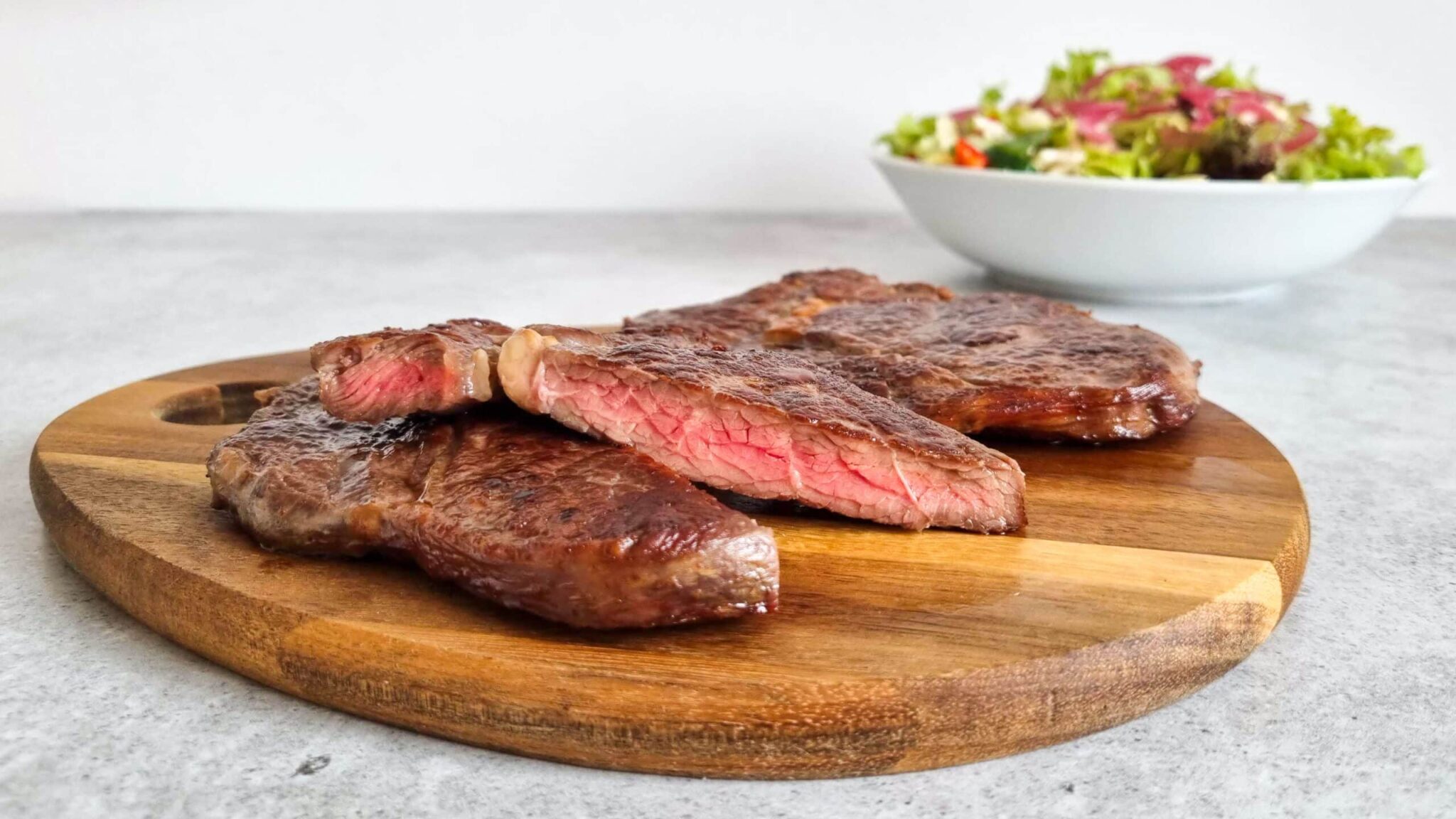
Where does the crust begin and end?
If we take a pan-fried steak as a starting point, the outermost, slightly brown layer is the crust. This is followed by a grey layer where the heat from the pan has moved into the steak and cooked the meat so much that it has changed colour. Lastly, there is the red centre, depending on how you have cooked your steak of course. Here, not enough heat has been applied to start the reactions that cause the meat to change colour. To conclude, only the outermost part of the steak constitutes the crust.
For which dishes is a nice crust important?
You might immediately think of steak when you think of a nice sear or crust. But there are actually many different foods and dishes where the crust is important for the final result.
Below we have compiled a list of some foods and dishes where a good cooking crust is important for the final result.
Dishes where the crust is important:
- Fried steak
- Roast potatoes
- Fried chicken breast
- Pancakes
- Danish meatballs
- Breaded or battered fish
- Fried bacon
- Pan-fried fish
- Bread
- Pan-fried vegetables
- Deep-fried food e.g. falafel, french fries etc.
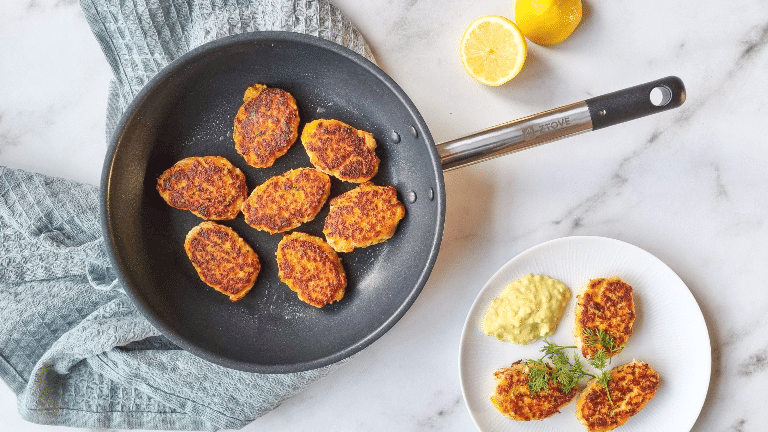
The link between crust colour, temperature and cooking time
When you can control the temperature of your frying pan precisely, you can more easily control the colour and thickness of your crust, making it easier to get a consistent result every time.
For example, when you cook a meat patty or meatball at a high temperature, the outside of the patty will quickly darken and the heat will not have time to travel far into the patty before the outside is done. Therefore, the crust will not be as thick. If you cook at a lower temperature but for a longer time, the heat will penetrate further into the patty without the outside becoming too dark. The outside of the patty will have more time to dry out and you will therefore achieve a thicker crust.
It is also important to find the right temperature depending on the colour of the crust and how you want your food cooked. You want the patty or meatball to be cooked all the way through without the crust getting too dark. Therefore, it is better to cook at a slightly lower temperature for a longer period of time. In addition, ingredients also need to be treated differently, some need gentle cooking, others can withstand higher heat. Fish, for example, is more delicate than other types of protein, so if we take meatballs as a starting point, we recommend:
- Regular meatballs/patties: 175 ºC (medium heat) for about 10 minutes
- Fish cakes: 165 ºC (medium heat) for about 12 minutes
When cooking a steak, the goal on other hand, is usually a pink or red centre. Here it is better to cook at a higher heat for a shorter time. This way you still get a nice brown crust without the steak being overdone.
If you have a steak with a thickness of 3 cm, we recommend first frying the steak for 1 minute on each side at 220 ºC (high heat) and then at 170 ºC (medium heat) for 3½ minutes on each side. The steak is cooked for a short time at a high temperature to get a dark crust. Then it is cooked a little longer at a lower temperature, both to give the crust some thickness and to be able to cook in butter without the butter burning.
It is difficult to give one perfect temperature and cooking time for a good crust, as it depends on what you are cooking and your taste preferences. Therefore, you should try it out and find out what you prefer.
3 tips for a nice crust
There are various tricks you can use to get a better frying crust. All three of these tips are fundamentally based around adding elements that promote Caramelisation and Maillard reactions. In other words, ingredients that are high in amino acids or sugars.
#1 Make a marinade
One thing you can do to get a better crust is to marinate your meat or vegetables before you cook them.
A marinade with sugar will increase the caramelisation of the food. Try adding honey, syrup, maple syrup, brown sugar or plain white sugar to your marinade.
Similarly, you can also add protein-rich ingredients to your marinade to promote the maillard reactions. If you marinate meat, some meat juices will automatically be released into the marinade and thereby contributing with protein or you can add soy sauce, beef stock or tomato puree. For instance, if you make a marinade with soy sauce and honey, you will assist both the Maillard reactions and the process of caramelisation.
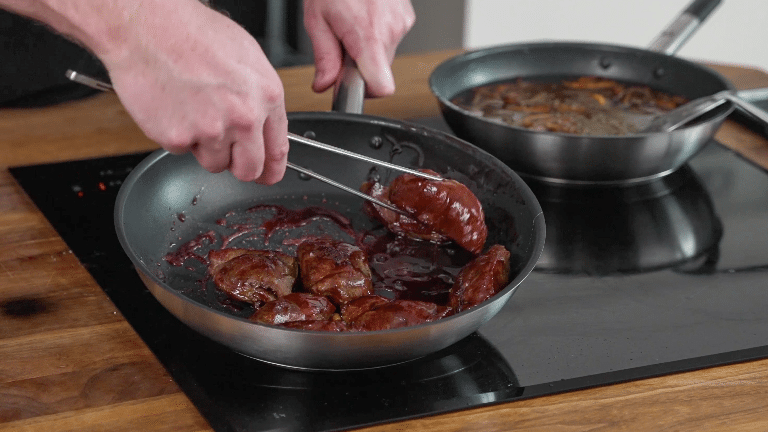
#2 Fry in butter
To get a really good crust, you can with advantage fry in butter, and preferably plenty of it. Butter contains both protein and sugars that promote the browning reactions. In addition, the heat transfer from the pan to the cooked element is also more even, when you fry in a generous amount of fat. This results in a more uniform and evenly browned crust.
When frying in butter, it is important to keep control of the temperature, as butter cannot withstand as high heat over a longer period of time as oil can. If the heat is too high for too long, the butter will start to burn and turn black and bitter.
Here the Arrhenius formula can be helpful. The rule of thumb we can create from the formula is that for every 10 °C the temperature rises, the cooking time halves, and for every 10 °C it falls, it doubles.
Let’s take an example. At 170 ºC you can cook for 10 minutes without the butter burning. If you lower the temperature to 160 ºC, you can cook for 20 minutes. If you increase the temperature to 180 ºC, you can only cook for 5 minutes before the butter starts to burn.
However, the rule of thumb is only a guide and doesn’t take into account how much liquid is in what you’re cooking. So if you are frying something with a high water content, such as a chicken breast, the liquid from the chicken will cool down the pan and the butter, and you will therefore be able to cook for a little longer without the butter burning. Also, it’s not that the butter suddenly burns, it just gradually starts to darken and become more bitter.
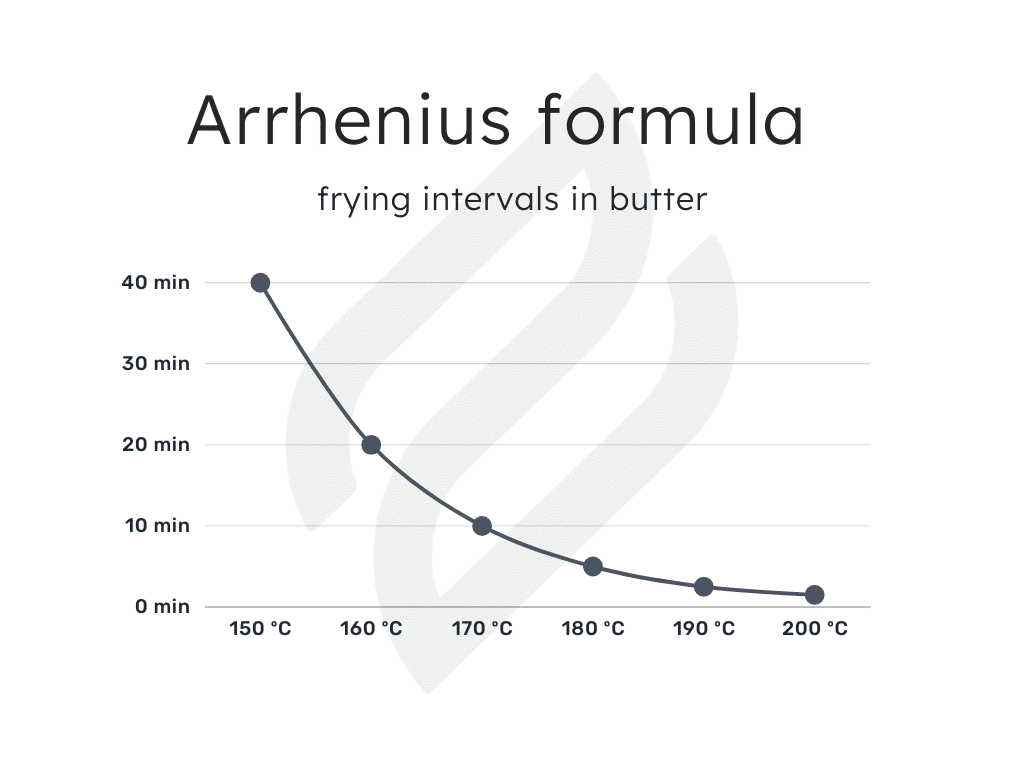
#3 Breading your meat or vegetables
A third thing you can do to achieve a nice and crispy crust is to coat the item you want to fry in either flour or breadcrumbs. The flour/bread crumbs will absorb a lot of fat and become crispy and delicious, and both the carbohydrates and proteins in the flour will take part in the browning reactions.
Breading also has another positive effect on your cooking. Breading forms a protective layer around what you are frying and will therefore help to give a more gentle cooking while retaining the moisture. Flour begins to brown at around 190 ºC (medium heat), so it is a good idea to cook breaded fish, meat and vegetables at this temperature.
